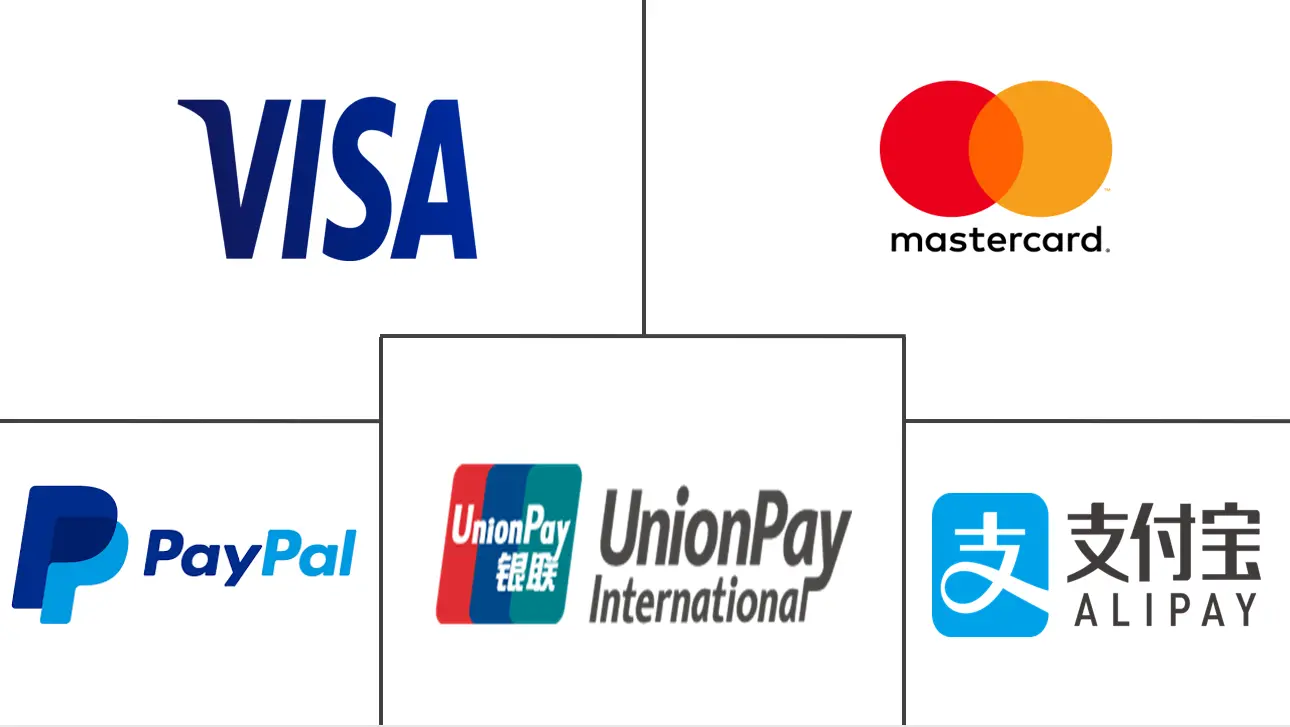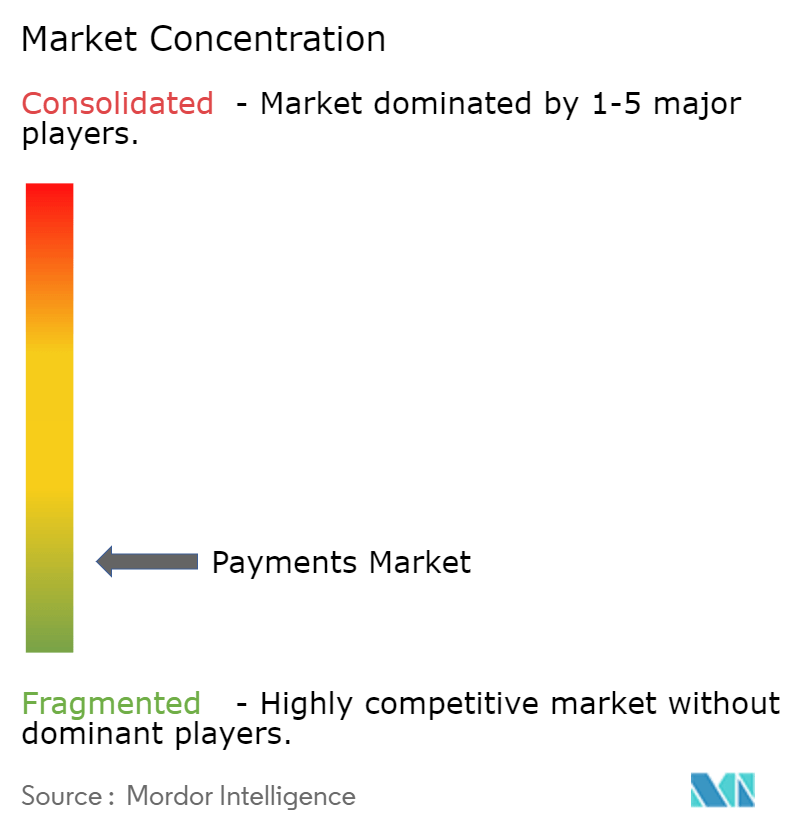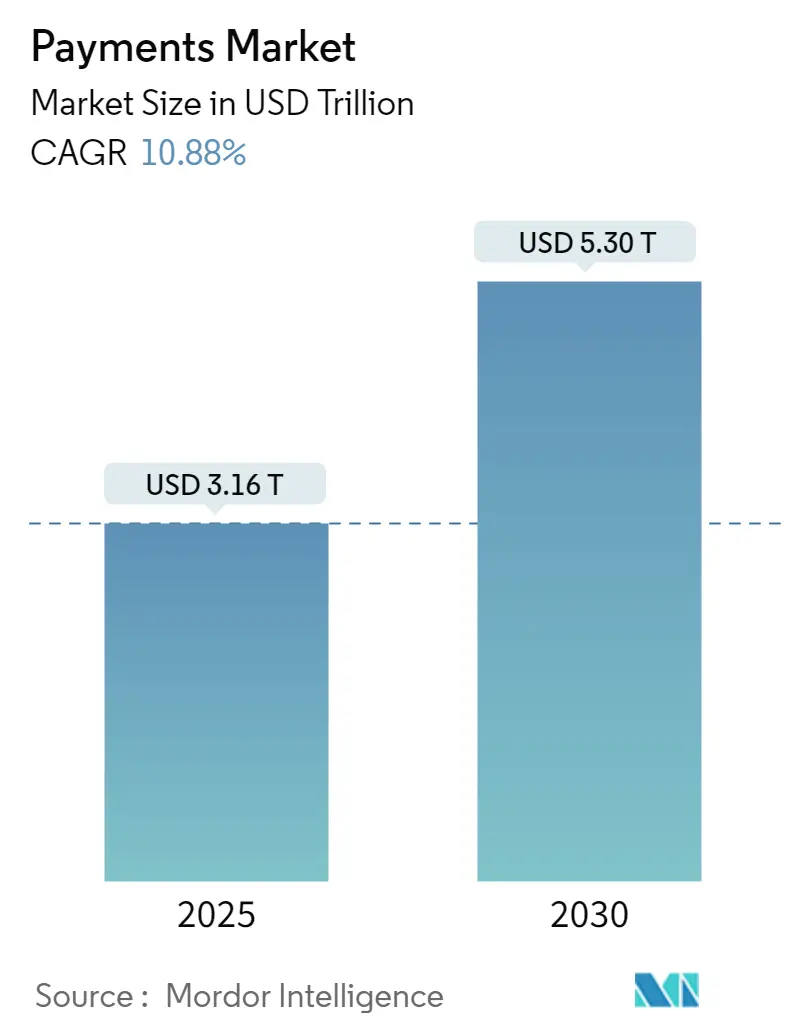
Payments Market Analysis
The Payments Market size is estimated at USD 3.16 trillion in 2025, and is expected to reach USD 5.30 trillion by 2030, at a CAGR of 10.88% during the forecast period (2025-2030).
The key factor augmenting the market's growth include growing digitization, growth in E-commerce, rising internet penetration, and rapid adoption of mobile payments, among others.
- The global payment system is rapidly changing from cash to digital payment. Payments are becoming increasingly cashless and supporting the development of digital economies and innovation in payment infrastructure. Contactless payments are increasingly becoming a preferred payment method in various countries worldwide. Contactless payment systems at the POS, such as facial recognition, Quick Response (QR) codes, or Near-field Communication (NFCs), are changing the payment landscape across the globe.
- According to Global Payments, consumers are more comfortable navigating the world through a digital lens after two years of shifting habits to working and shopping significantly online. Statistically, over half of the consumers from the company consider themselves more digital, with 39% shopping from a smartphone daily or weekly and 23% saying that they shop online at least daily.
- Furthermore, factors such as government financial inclusion initiatives that continue to encourage people to open bank accounts for the first time in developing countries and growing smartphone and internet penetration are further driving the growth of the global payments market.
- Innovation in payment technology is ongoing across the world. Real-time payments are common in many geographies, including India and China. For instance, in February 2023, India's Unified Payments Interface, or UPI, and Singapore's PayNow officially connected, allowing for a 'real-time payment linkage.' With this, Singapore became the first country with which cross-border Person to Person (P2P) payment facilities have been launched. Likewise, in January 2023, ACI Worldwide announced the launch of ACI Instant Pay, which enables merchants in the U.S. to accept online, mobile and in-store payments instantly, thus powering domestic and pan-regional real-time schemes reaching billions worldwide.
- Furthermore, digital and mobile payment apps are rapidly growing in many countries due to the ease of convenience these methods offer. Digital payments apps solutions such as Apple Pay, Google Pay, and QR codes continue to grow. The growth of digital payments is further supported by increasing E-commerce worldwide.
- However, digital payment services have benefits but pose privacy and security risks that can harm consumers, merchants, markets, and nations and hamper growth. Payment systems must be redesigned to protect privacy and use unbreakable encryption and open standards. Data privacy legislation and a strong market regulator are also necessary.
- The COVID-19 pandemic reinforced major shifts in payment behavior worldwide: declining cash usage, migration from in-store to online commerce, adoption of instant payments, and adoption of digital payments. These shifts during COVID-19 created new opportunities for payment players to evolve into contactless and digital payment solutions.
Payments Market Trends
The Payments have been Sharing wide Traction Owing to Rising Retail Sector
- The retail industry comprises all companies selling goods and services to consumers. The retail industry underwent an enormous transformation, especially during the pandemic, as it accelerated digital offerings and adapted quickly to new customer needs as consumer appetite for retail sales has remained robust. Presently, consumers want to combine the benefits of traditional shopping habits with the convenience of using modern technology, so they can be found shopping online using their tablets or smartphones, or they could also be on the high street in a brick-and-mortar store.
- Thus, retailers are required to provide a hassle-free, seamless experience for the consumer to remain competitive. According to National Retail Federation, 2022 annual retail sales grew by 7% over 2021, totaling USD 4.9 trillion. This growth rate is above the pre-pandemic average annual retail sales growth of 3.6%.
- There are several ways customers could pay for goods in your retail business. Many payment solutions provider companies partner with E-commerce giants for smooth payment checkout solutions. Additionally, many E-commerce giants have already launched their digital wallets to gain more market share, such as AliPay and Amazon Pay. It also results in the growth of the E-commerce market across the world.
- Another payment method popular in online retail is Buy Now Pay Later services offered by most E-commerce giants worldwide. Moreover, real-time payments such as buy now and pay later are becoming a common sight at checkouts across the globe. As partnerships begin among BNLP brands, banks, and digital wallets, BNLP is expected to take a significant share of payments globally.
- The COVID-19 pandemic made a considerable impact on the E-commerce market globally. With brick-and-mortar stores shuttering overnight, shoppers flocked to the Internet to buy their things. The Pandemic accelerated the shift to online shopping supported by digital payment solutions. Furthermore, M-commerce continues to gain traction over the coming years. Technological advances like branded shopping apps, 5G wireless, and social shopping make it easier for people to shop on their phones.
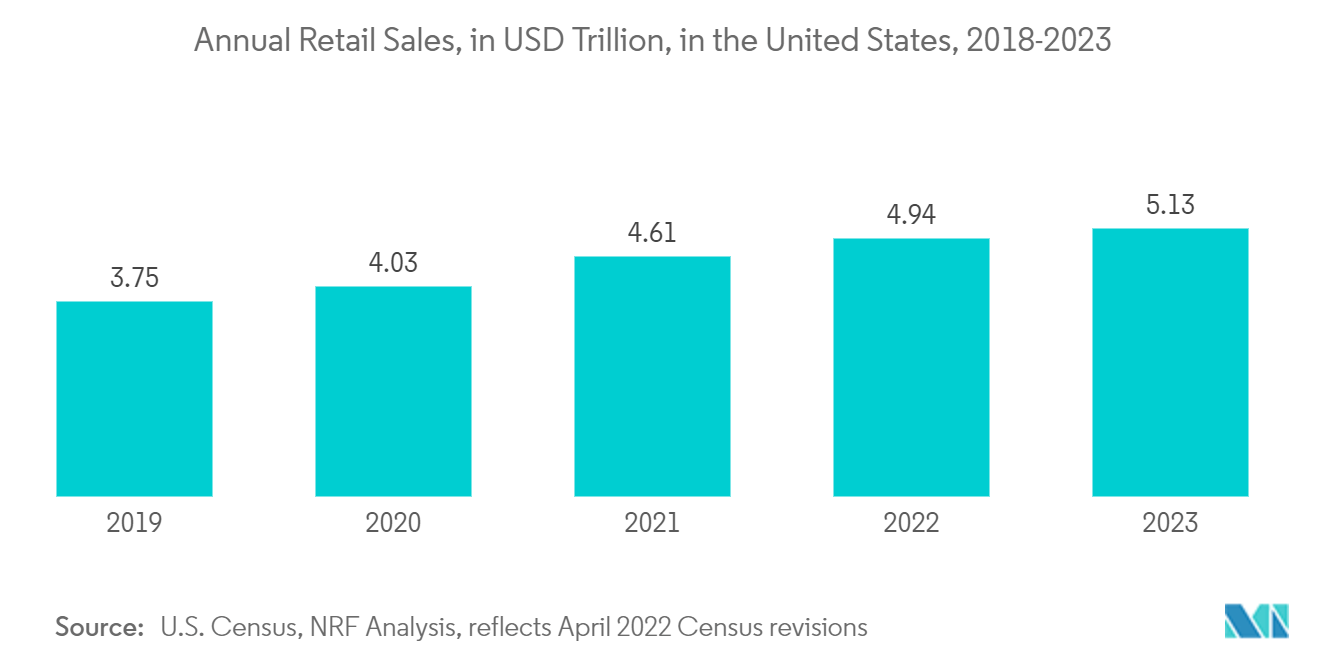
Asia Pacific Expected to Witness Significant Growth in the Market
- Asia-Pacific has been the most significant and fastest-growing payments market region over the past few years, owing to the consistently strong growth rate of China's economy and the emerging economy of India, Government initiatives towards digitization, and the growing adoption of E-commerce in the region.
- Moreover, the Asia Pacific payments sector has benefited from extensiv e fintech activity focused on digitizing small merchants and enhancing overall business efficiency, with many fintech companies launching their digital wallets in the region.
- China accounts for a significant market share within the Asia Pacific region and generates higher payment revenues than any major region globally. Further, major market players such as AliPay and UnionPay are expanding their services across the region with innovative payment solutions.
- Furthermore, the growth of the Asia Pacific is further attributed to the rise of real-time payments in the region. India's real-time payment system generates significant revenue in the India Payments market. The emergence of Buy Now Pays Later services also drives the Asia Pacific payments market. Moreover, increased access to real-time payment rails has fueled rapid growth in bilateral cross-border payment activity: notable in Singapore, Indonesia, and Thailand corridors, an area with significant potential for value-added services.
- The COVID-19 pandemic accelerated reductions in cash usage, particularly in markets such as Indonesia and Thailand, creating new digital revenue opportunities. A solid majority moved permanently to card and digital wallet-based forms.
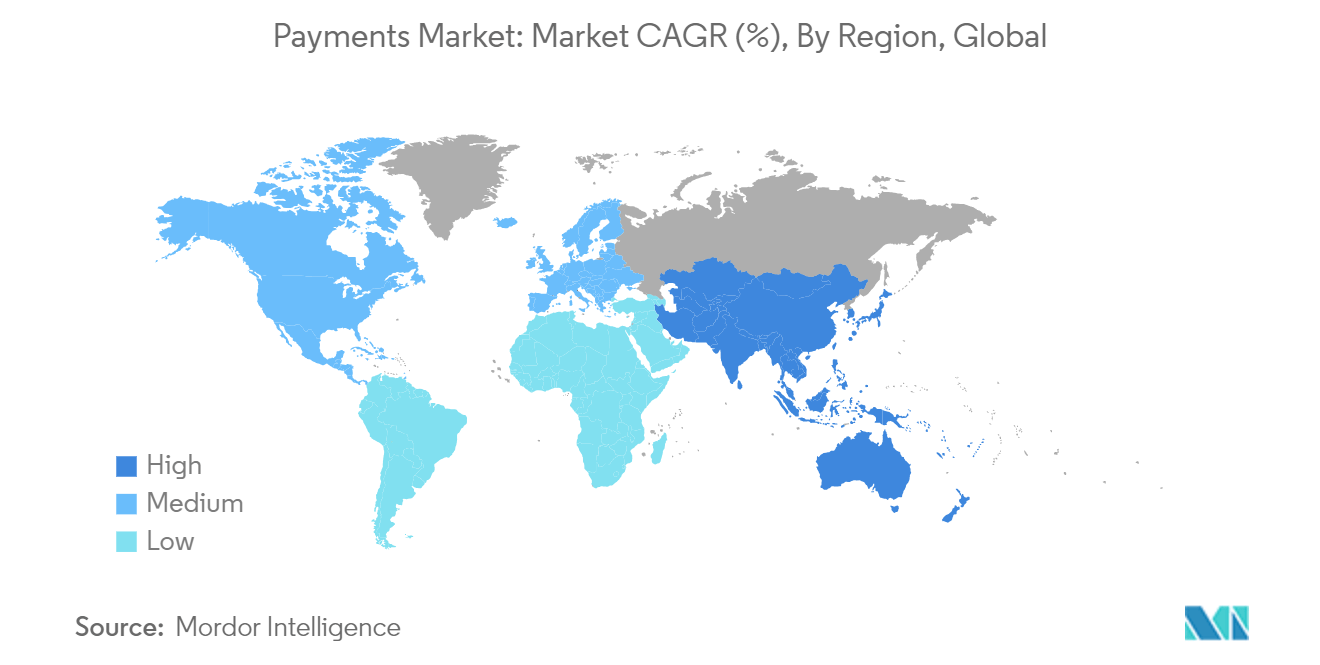
Payments Industry Overview
The payment market competition appears to be fragmented, with several players in the market. These major players offer innovative digital payment technologies and indulge in mergers and acquisitions to gain market share. Major players in the Global payments market include Mastercard Inc., Visa Inc., UnionPay International, and PayPal Holdings Inc., among others.
- November 2023 - Mastercard and Japan’s NEC collaborated to bring progress in in-store biometric payments. Through a signed contract of Understanding, the partnership is projected to implement NEC's face recognition and liveness verification technology, in addition to Mastercard's payment enablement and optimized user experience to boost on the countrywide scale.
- May 2023 - TD Bank launched a new suite of credit card products to harness the growing momentum in the credit card space. The company introduced a no-interest credit card that charges a simple monthly fee, a pioneering concept in the U.S. market, and the introduction of TD FlexPay, touted as TD's most flexible credit card yet, featuring increased payment flexibility and attractive balance transfer offers.
Payments Market Leaders
-
Mastercard Inc.
-
Visa Inc.
-
PayPal Holdings, Inc.
-
AliPay (Alibaba Group)
-
UnionPay International
- *Disclaimer: Major Players sorted in no particular order
Payments Market News
- October 2023: Square Capital LLC announced the debut of Tap to Pay on iPhone in Australia, where Square would make the technology available to its sellers. Tap to Pay on iPhone is available in the Square Point of Sale, Square for Retail, and Square Appointments iOS apps. It allows vendors of all sizes to accept contactless payments directly from their iPhones, with no additional hardware required or expense.
- July 2023: Grow Finance announced that the company partnered with Pismo to issue new Mastercard credit cards for small businesses in Australia. This new offer gives business owners better cash flow, management, and capital to help them improve their businesses.
- April 2023: Stripe announced the launch of unified commerce solutions for Australia. Through this, businesses of all sizes can accept in-person payments using the Stripe Terminal SDK and Tap to Pay on Android or Stripe Readers to unify online and in-person commerce with a single integration.
Payments Industry Segmentation
The payments market is segmented by mode of payment (point of sale [card payment [debit card, credit card, bank financing card], digital wallet [mobile wallets], other modes of payment [cash on delivery, bank transfer, buy now pay later]), (online sale (card payment [debit card, credit card, bank financing card], digital wallet [Mobile Wallets], other online sales [cash on delivery, bank transfer, buy now pay later]), by end-user industries (retail, entertainment, healthcare, hospitality) and geography (North America, Europe, Asia-Pacific, Latin America, Middle East and Africa).
The report offers market forecasts and size in value (USD) for all the above segments.
| By Mode of Payment | Point of Sale | Card Payments (includes Debit Cards, Credit Cards, Bank Financing Prepaid Cards) | |
| Digital Wallet (includes Mobile Wallets) | |||
| Cash | |||
| Other Points of Sale | |||
| Online Sale | Card Payments (includes Debit Cards, Credit Cards, Bank Financing Prepaid Cards) | ||
| Digital Wallet (includes Mobile Wallets) | |||
| Other Online Sales (includes Cash on Delivery, Bank Transfer, and Buy Now, Pay Later) | |||
| By End-user Industry | Retail | ||
| Entertainment | |||
| Healthcare | |||
| Hospitality | |||
| Other End-user Industries | |||
| By Geography | North America | ||
| Europe | |||
| Asia-Pacific | |||
| Latin America | |||
| Middle East & Africa | |||
Payments Market Research FAQs
How big is the Payments Market?
The Payments Market size is expected to reach USD 3.16 trillion in 2025 and grow at a CAGR of 10.88% to reach USD 5.30 trillion by 2030.
What is the current Payments Market size?
In 2025, the Payments Market size is expected to reach USD 3.16 trillion.
Who are the key players in Payments Market?
Mastercard Inc., Visa Inc., PayPal Holdings, Inc., AliPay (Alibaba Group) and UnionPay International are the major companies operating in the Payments Market.
Which is the fastest growing region in Payments Market?
Asia Pacific is estimated to grow at the highest CAGR over the forecast period (2025-2030).
Which region has the biggest share in Payments Market?
In 2025, the Asia Pacific accounts for the largest market share in Payments Market.
What years does this Payments Market cover, and what was the market size in 2024?
In 2024, the Payments Market size was estimated at USD 2.82 trillion. The report covers the Payments Market historical market size for years: 2019, 2020, 2021, 2022, 2023 and 2024. The report also forecasts the Payments Market size for years: 2025, 2026, 2027, 2028, 2029 and 2030.
Our Best Selling Reports
Payments Industry Report
The payments market is witnessing significant growth, propelled by the swift adoption of digital transactions and e-commerce expansion. The market research highlights that the payments market is segmented by type, application, and end-user industry. It encompasses various payment methods like credit transfer, direct debit, and more, applied across sectors including retail and banking. The digital shift, spurred by digitization, internet penetration, and mobile payment convenience, introduces innovations like contactless payments and real-time systems, enhancing transaction convenience and flexibility.
Emerging trends such as biometric authentication and QR technology are improving security and efficiency, although challenges like rising fraud cases call for stringent security. Despite obstacles, the market's growth trajectory remains robust, driven by digital transformation and the demand for secure, convenient payment solutions. The market size and industry overview indicate substantial market value and growth rate.
Industry analysis reveals that market data and industry information are crucial for understanding the market outlook and industry trends. The market forecast and market segmentation provide insights into the future market predictions and market review. The report pdf offers detailed industry reports and industry statistics, which are essential for industry research and understanding industry sales.
Research companies provide valuable market overview and market predictions, helping stakeholders make informed decisions. The market leaders are adapting to the changing landscape, ensuring they stay ahead in the competitive market. The report example illustrates the importance of industry outlook and market growth in shaping the future of the payments market.
In conclusion, the comprehensive analysis in the report pdf provides an in-depth understanding of the market value and market segmentation, highlighting the importance of market data and industry research for future growth.

